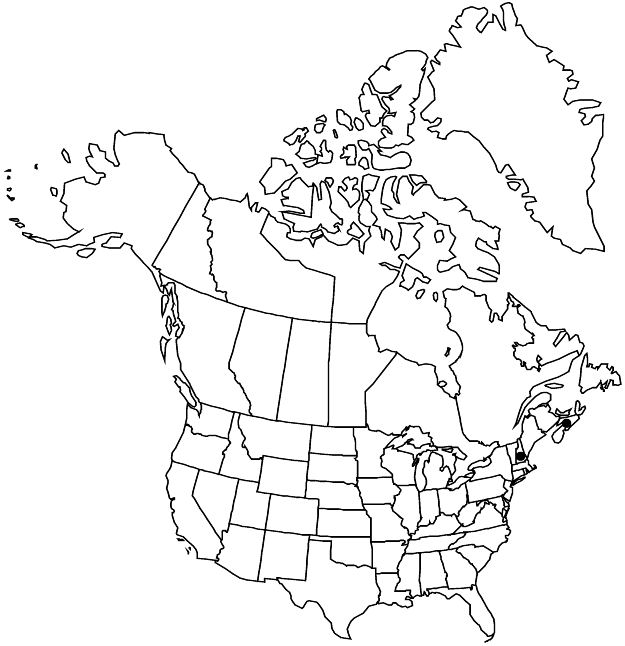Geum peckii
Fl. Amer. Sept. 1: 352. 1813.
Plants subscapose. Stems 7–40 cm, glabrate, sparsely downy, or pilose proximally, downy or pilose distally. Leaves: basal 5–15 cm, blade strongly lyrate-pinnate, major leaflet 1, minor leaflets 4–10, terminal leaflet much larger than minor laterals; cauline 0.8–1.7 (–2.5) cm, stipules not evident, blade bractlike, not resembling basal, simple, 3-fid. Inflorescences 1–2 (–4) -flowered. Pedicels densely downy, usually eglandular. Flowers erect; epicalyx bractlets 2–3 mm; hypanthium green; sepals spreading, 4–7 mm; petals spreading, yellow, obcordate, nearly orbiculate, or broadly ovate, 9–13 mm, nearly 2 times sepals, apex broadly rounded, emarginate, or irregularly erose. Fruiting tori sessile, glabrous. Fruiting styles wholly persistent, not geniculate-jointed, 6–9 mm, apex not hooked, pilose in basal 1/3, eglandular. 2n = 42.
Phenology: Flowering summer.
Habitat: Alpine meadows, wet spots on rocky cliffs and slopes, montane streamsides, coastal bogs
Elevation: 0–1900 m
Discussion
Of conservation concern.
Geum peckii occurs at 0–10 m in Nova Scotia and at 1500–1900 m in New Hampshire.
Selected References
None.
Lower Taxa
"thin" is not a number."elongating" is not a number. "elongating" is not a number.
